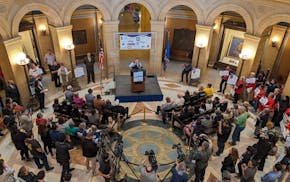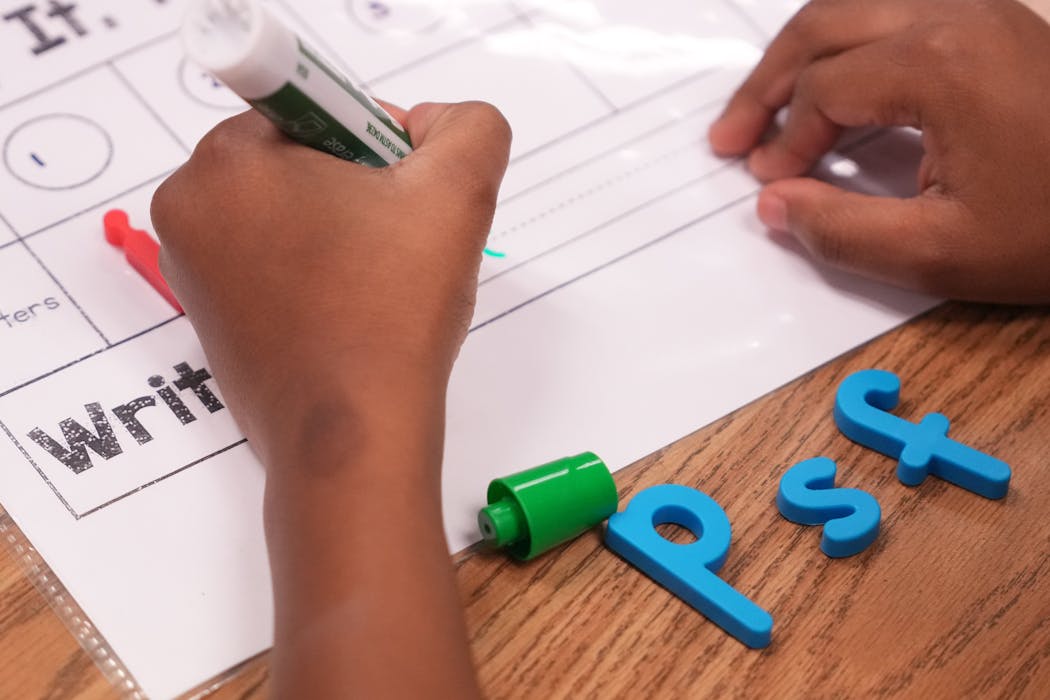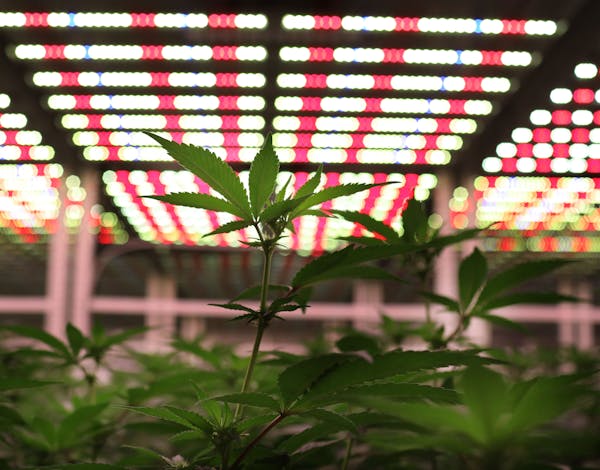St. Paul Public Schools is receiving $319 million in federal funds in response to the COVID-19 pandemic — the largest haul for any district in the state.
One goal for spending it? Academic recovery. And a focus on reading is on display every day in elementary schools like Benjamin E. Mays in the Summit-University area.
Teacher Lucinda Stelle sat recently with six students, moving at a brisk pace as they sounded out words.
But she applied the brakes at a pivotal point: "Is reading a race?" she said. "No," the students exclaimed, and they leaned more deliberately into the task at hand.
The techniques being taught are grounded in the "science of reading," and St. Paul has 170 teachers who've been trained in the methods by the Minnesota Department of Education. The district also has the luxury of being able to use its federal money to pay 80 such teachers and coaches, at $11 million a year.
St. Paul's handling and accounting of its COVID relief funding has drawn national attention, first from the Council of the Great City Schools and then the nonprofit news website the 74. That led to a star turn of sorts for Superintendent Joe Gothard and others in a virtual event hosted this year by the U.S. Department of Education.
"There is more money in education than ever before," U.S. Secretary of Education Miguel Cardona said in an introduction.
St. Paul and other districts must spend or commit their funds by the end of September 2024, leaving teachers like Stelle at Benjamin E. Mays to wonder: "What happens when the money runs out?"
A big question, to be sure, especially with the breadth of initiatives and targeted investments underway in St. Paul.
Here's a look at some ways the district is spending a windfall Gothard describes as "a once-in-a-generation opportunity."
Staff and curriculum
Spending on curriculum and instruction, including science-of-reading interventions, and high-dosage tutoring and staff retention bonuses have been among the top uses of federal COVID relief dollars, said Austin Estes of the Council of Chief State School Officers.
A year ago, St. Paul added $1,500-a-year retention bonuses to contracts with union members forced to navigate the back-and-forth shifts of in-person and distance learning in 2020-21 and 2021-22. The price tag for licensed staff members alone — most being teachers — was $10 million as of July 2022.
As for the total cost of the bonuses, Leah Corey, director of the district's innovation office, referred to a public dashboard showing how St. Paul is spending its COVID funds — itself a subject of praise by some, though it comes with lags in reporting.
Could bonuses be in play again in 2023-24 negotiations? Yet to be decided, Corey said.
Keeping buses rolling
Private employees — bus drivers, notably — also enjoyed district support.
Last year, St. Paul steered $581,778 in COVID money to bus and van contractors handling the bulk of student transportation. One company used the money to fund a $3,000 bonus while another raised its base pay by $1.50 an hour, Ben Harri, the district's transportation director, said last week.
Issues tied to bus driver shortages remain, however. Many high schoolers still will ride Metro Transit buses in 2023-24, Harri said.
But the number of routes covered by yellow buses is up from 175 to 200, service has returned to LEAP High School and busing is being provided to an after-hours middle school program called Flipside.
Strengthening personal connections
Middle school can be a rough time for kids. To help them feel more at home and catch up on studies, the district used COVID money to expand the after school Flipside program from six to 15 schools in 2021-22. More than three-quarters of students surveyed reported making new friends and feeling supported by adults and more attuned to career options.
Flipside's price tag was $512,268 in 2021-22, and is expected to double this year, Corey said.
To meet the district's goal of placing a counselor in every school, St. Paul is tapping $1.2 million a year in federal funds for nine counselors, Corey said, as well as using an additional $1.4 million annually to pay nine social workers.
Staff members also are tending to their mental health and wellness needs through professional learning opportunities funded to the tune of more than $200,000.
Hiring and retaining teachers
To build a more diverse teaching corps, the district has invested $3.4 million a year in federal funds to create a 14-member recruitment and retention team. It reported hiring a greater percentage of people of color in 2022 than in 2021.
Earlier this year, district staffers traveled to four historically Black colleges and universities in Tennessee as part of a new effort to boost recruiting. Corey described the trip as a first step to a long-term pipeline, adding that the team met with more than 75 college students either in person or virtually.
Future hopes and questions
Back at Benjamin E. Mays, Stelle is excited about the district's approach to lifting struggling readers to grade level. Districtwide, preliminary data showed students who took part in the small-group sessions outpaced the gains of those who did not, said Stacey Gray Akyea, executive chief of equity, strategy and innovation.
"We want to continue," she said. "Even perhaps double down."
But Corey said it remains to be seen what the effort looks like in 2023-24 — and, more crucially, when the millions in pandemic relief funds dry up.
![Metropolitan Council Chair Charlie Zelle says the council "will take steps to ensure [rider] concerns are fully documented," following the release of](https://arc.stimg.co/startribunemedia/3DUUWUL3DKZ5KVG746POLRVCCM.jpg?h=91&w=145&fit=crop&bg=999&crop=faces)
Late pick-ups, slow service, unearned bonuses: State audit finds fault with Metro Mobility
Plot to sell pricey dog stolen in St. Paul foiled when potential buyer sees pet on flyer, charges say

Hennepin board OKs Moriarty's request to hire outside lawyers for Trooper Londregan prosecution



